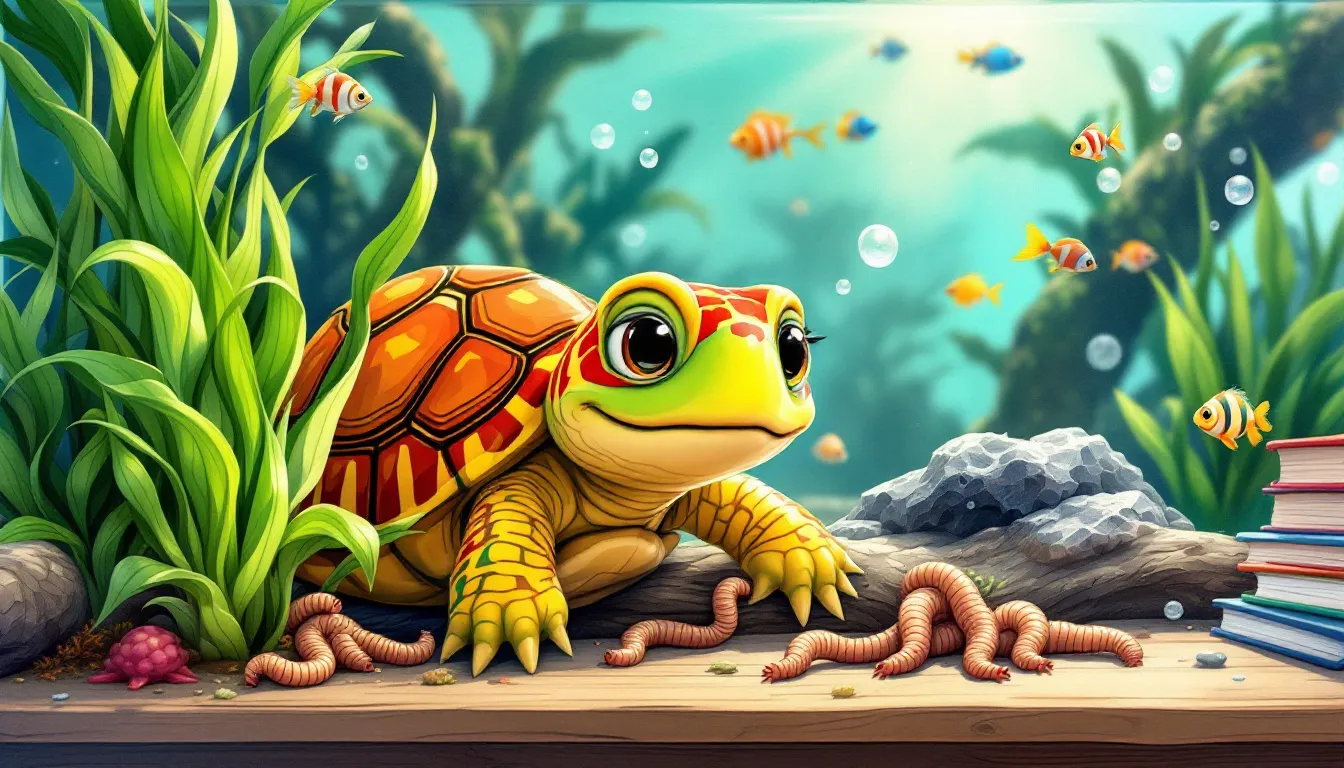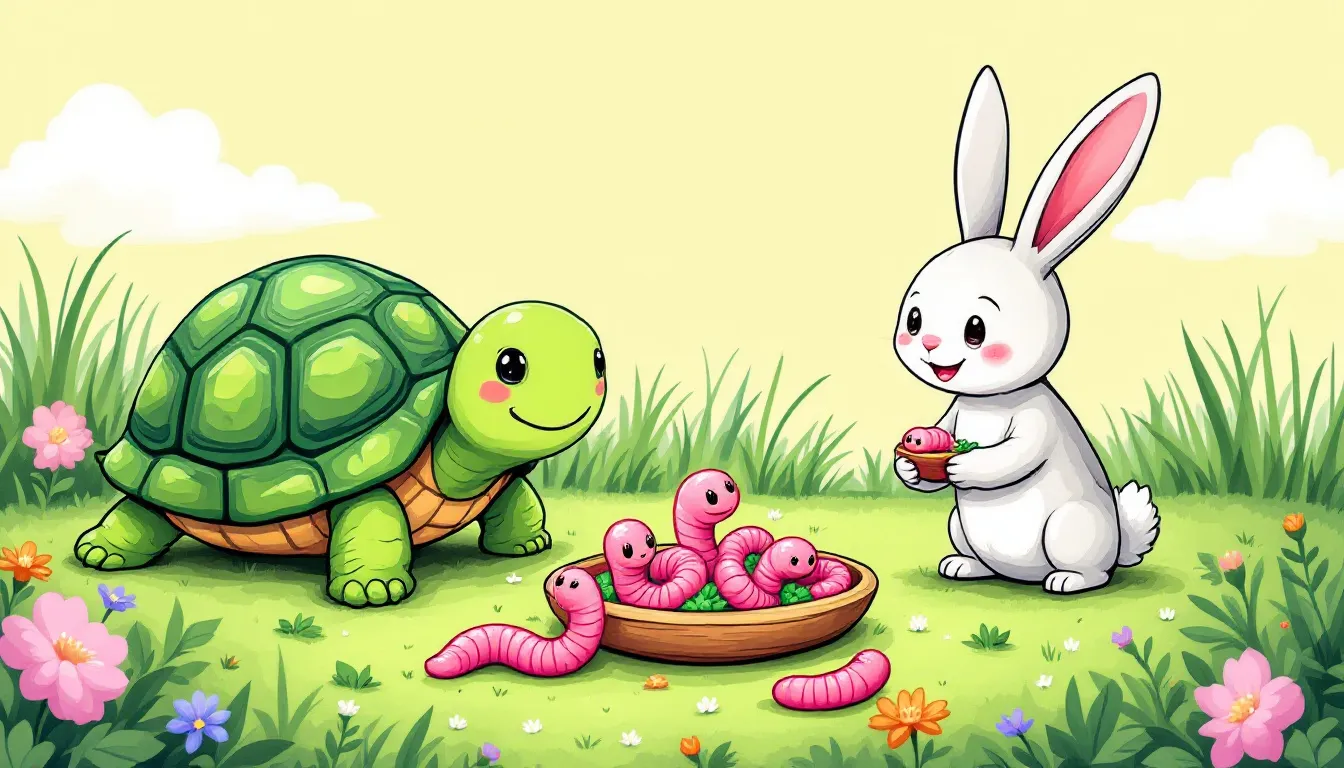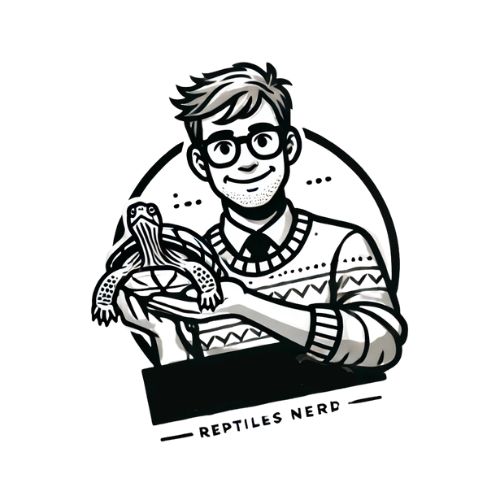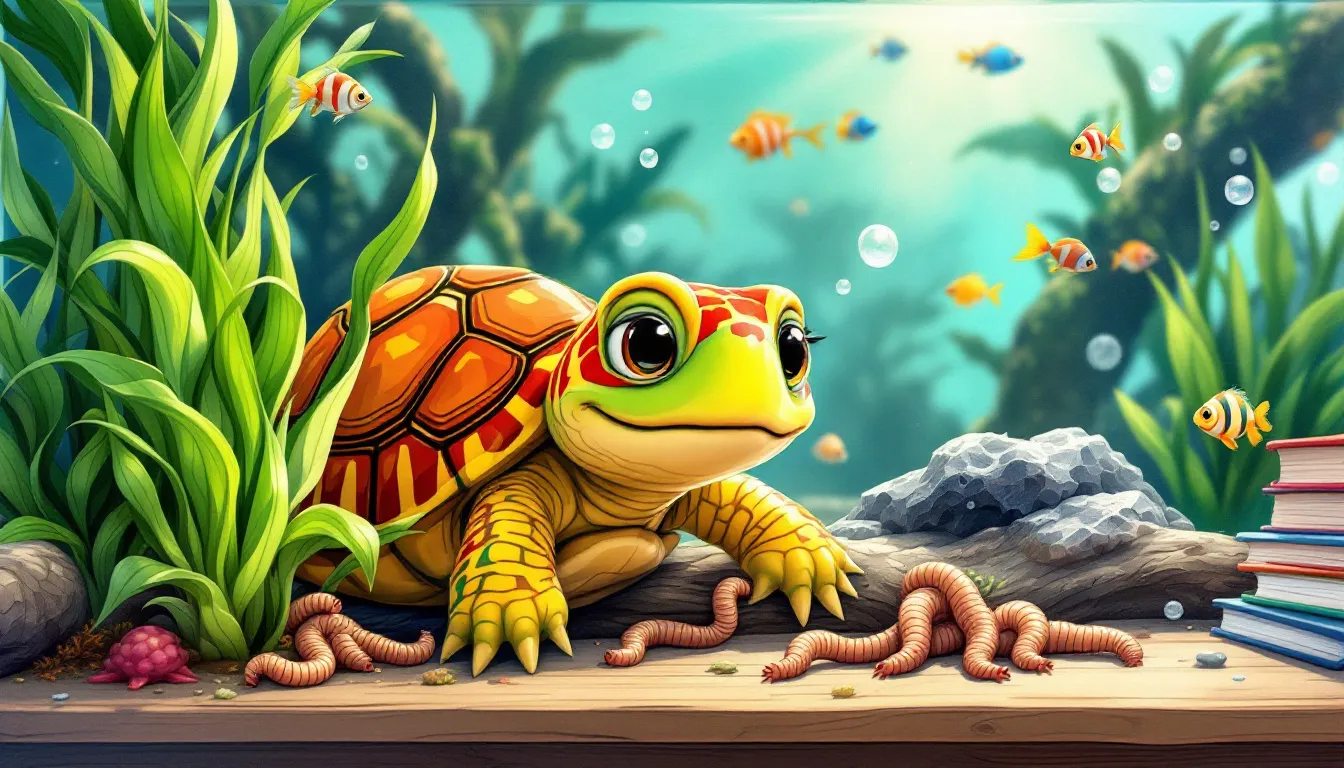Yes, red-eared sliders can eat superworms. They are a nutritious protein source when included in a balanced diet. In this article, learn about their benefits, feeding tips, and how to safely introduce “can red eared sliders eat superworms” to your turtle’s diet.
Key Takeaways
- Red-eared sliders require a balanced diet with a variety of animal protein sources, including superworms, to support their growth and health.
- While superworms are nutrient-rich, they should be fed in moderation due to their tough exoskeleton and high-fat content to prevent digestive issues.
- Incorporating both commercial and live foods in a diet helps meet nutritional needs, while essential calcium from dietary sources is crucial for shell and bone health.
Superworms in a Red-Eared Slider’s Diet

Red-eared slider turtles thrive on a balanced diet that includes both animal protein and plant matter. Animal protein is crucial for their growth, energy levels, and overall health. Incorporating superworms introduces essential proteins that contribute to their development. However, variety is key for their health, growth, and shell development. The red eared slider turtle benefits greatly from this diverse diet.
While superworms are a beneficial addition to a red-eared slider’s diet, they shouldn’t be the only source of animal protein. A balanced diet includes a mix of animal protein, vegetables, fruits, and occasional treats, ensuring comprehensive nutrition and promoting well-being.
Adding superworms to your turtle’s diet is simple. They can be included alongside mealworms, small fish, shrimp, and other protein sources. This variety meets dietary needs and keeps your red-eared slider engaged during feeding times.
Nutritional Benefits of Superworms

Superworms are nutrient-rich, making them a valuable addition to your turtle’s diet. Their high protein content supports growth and tissue repair, making them an excellent choice for your pet’s overall development.
Besides protein, superworms are rich in healthy fats, providing energy and helping maintain cellular membranes. These fats ensure red-eared sliders have the energy for their active lifestyles, making superworms a nutritional powerhouse.
Superworms also offer other essential nutrients, contributing to overall health. Including them in the diet provides a holistic nutritional profile, supporting growth and various bodily functions, and playing a significant role in meeting the nutritional needs of red-eared sliders.
Feeding Superworms Safely
Feeding superworms to your red-eared slider requires some considerations. They should be fed sparingly due to their tough exoskeleton, which can cause digestive issues if consumed excessively. Moderation ensures your turtle’s health remains optimal.
Ensure the superworms are appropriately sized for your turtle, as larger ones may pose a choking hazard. Overfeeding can lead to obesity and related health problems, so monitoring the quantity and frequency of superworms in your turtle’s diet is important.
Manage feeding frequency carefully. Superworms are nutritious but shouldn’t be the only food item. Rotate them with other protein sources to maintain a balanced diet and prevent digestive issues. Keep the feeding area clean to avoid contamination and ensure your turtle’s health.
Other Animal Protein Sources
Superworms are a great protein source, but variety in animal protein sources is essential. Alternatives like dried shrimp, krill, earthworms, and crickets provide different nutritional benefits, ensuring a balanced diet.
Live food like small fish, including guppies and platies, can also be part of the diet. These fish provide protein and engage the turtle’s natural hunting instincts. Pre-killed crayfish, when served with their shells, offer high calcium content.
Whole freshwater fish like minnows and shiners are reliable calcium sources. Including these various protein sources ensures your red-eared slider receives a comprehensive range of nutrients, promoting overall health and vitality.
Balancing Your Turtle’s Diet

A balanced diet for your red-eared slider involves offering a diverse range of foods. This variety keeps your turtle engaged and ensures comprehensive nutrition. Continuously feeding the same type of food can lead to boredom and reluctance to eat.
A balanced diet includes both animal and plant-based foods. Fresh vegetables like dandelion greens and dark leafy greens should accompany protein sources like superworms. Fruits like peaches can be offered in small amounts as occasional treats, but avoid overfeeding to prevent digestive issues.
Commercial turtle food can be part of the diet but shouldn’t be the only source of nutrition. Rotate superworms with other protein sources and include various vegetables and fruits to maintain a balanced diet, promoting proper growth and health.
Commercial Turtle Food vs. Live Food
The debate between commercial turtle food and live food continues among turtle enthusiasts. Commercial turtle food, including turtle pellets, offers convenience and a balanced mix of nutrients. However, some turtles may prefer live options.
Live food, such as fish and worms, can be more enriching for your red-eared slider. They stimulate natural hunting behaviors and provide a varied diet. Ensure live food is sourced properly to avoid health risks.
Feeding a mix of both commercial food and live food helps ensure nutritional adequacy. While commercial options provide necessary calcium, they shouldn’t completely replace whole fish and other live food. This balanced approach caters to dietary preferences and nutritional needs.
Importance of Calcium and Supplements
Calcium is crucial for red-eared sliders, essential for healthy shells and bones, and preventing metabolic bone disease. Superworms provide essential vitamins and minerals, including calcium and phosphorus, vital for bone health and muscle function.
Cuttlebone in your turtle’s enclosure naturally meets their calcium needs and prevents deficiencies. Calcium blocks are also beneficial, offering direct consumption and assisting in beak maintenance.
Avoid over-supplementing calcium. Balancing calcium intake through a mix of dietary sources and supplements ensures your red-eared slider receives necessary nutrients for optimal health.
Tips for Feeding Baby Red Eared Slider Turtles

Feeding baby red-eared slider turtles presents unique challenges. Juvenile turtles and young turtles need a diet of equal parts protein and vegetables until they reach one year old. Consistently offer vegetables, even if they show reluctance.
Feeding should always occur in water to facilitate proper swallowing, as red-eared sliders cannot eat effectively on land. Offer protein that can be consumed within 5-10 minutes.
Baby red-eared sliders can eat superworms, but sparingly and with appropriately sized ones to avoid choking hazards. Following these tips ensures the diet supports their growth and development for pet red eared sliders.
Benefits Of Occasional Treats for Red-Eared Sliders
Occasional treats can delight your red-eared slider. They can safely consume frozen chicks, and small pieces of cooked chicken or fish. Certain fruits, like strawberries and blueberries, serve as treats in moderation.
Superworms should be occasional snacks due to their high-fat content. Limiting treats ensures your turtle’s diet remains balanced and prevents dietary imbalances.
Given sparingly, an occasional treat can enhance the diet of red-eared sliders, adding variety and keeping them engaged.
Summary
In conclusion, red-eared slider turtles thrive on a balanced diet that includes a mix of animal protein, vegetables, and occasional treats. Superworms provide essential proteins and fats but should be fed sparingly to avoid digestive issues. A varied diet ensures comprehensive nutrition, promoting growth and health.
By understanding the dietary needs of red-eared sliders and incorporating a mix of commercial and live food, along with necessary supplements, you can ensure your pet’s well-being and longevity.
Frequently Asked Questions
Can red-eared sliders eat superworms every day?
Red-eared sliders should not eat superworms daily because their tough exoskeleton and high fat content can lead to digestive issues and obesity. It’s best to offer them as an occasional treat instead.
What are other good protein sources for red-eared slider turtles?
Red-eared slider turtles benefit from a variety of protein sources such as dried shrimp, krill, earthworms, crickets, and small live fish like guppies and platies. Incorporating these options can help ensure a balanced diet for your turtle.
How often should I feed my red-eared slider?
Feed adult red-eared sliders every other day and juveniles daily, ensuring a balanced diet of animal protein and vegetables. This approach supports their health and growth effectively.
Do red-eared sliders need supplements?
Yes, red-eared sliders require calcium supplements to prevent metabolic bone disease. Providing cuttlebone or calcium blocks in their enclosure can effectively meet their dietary needs.

